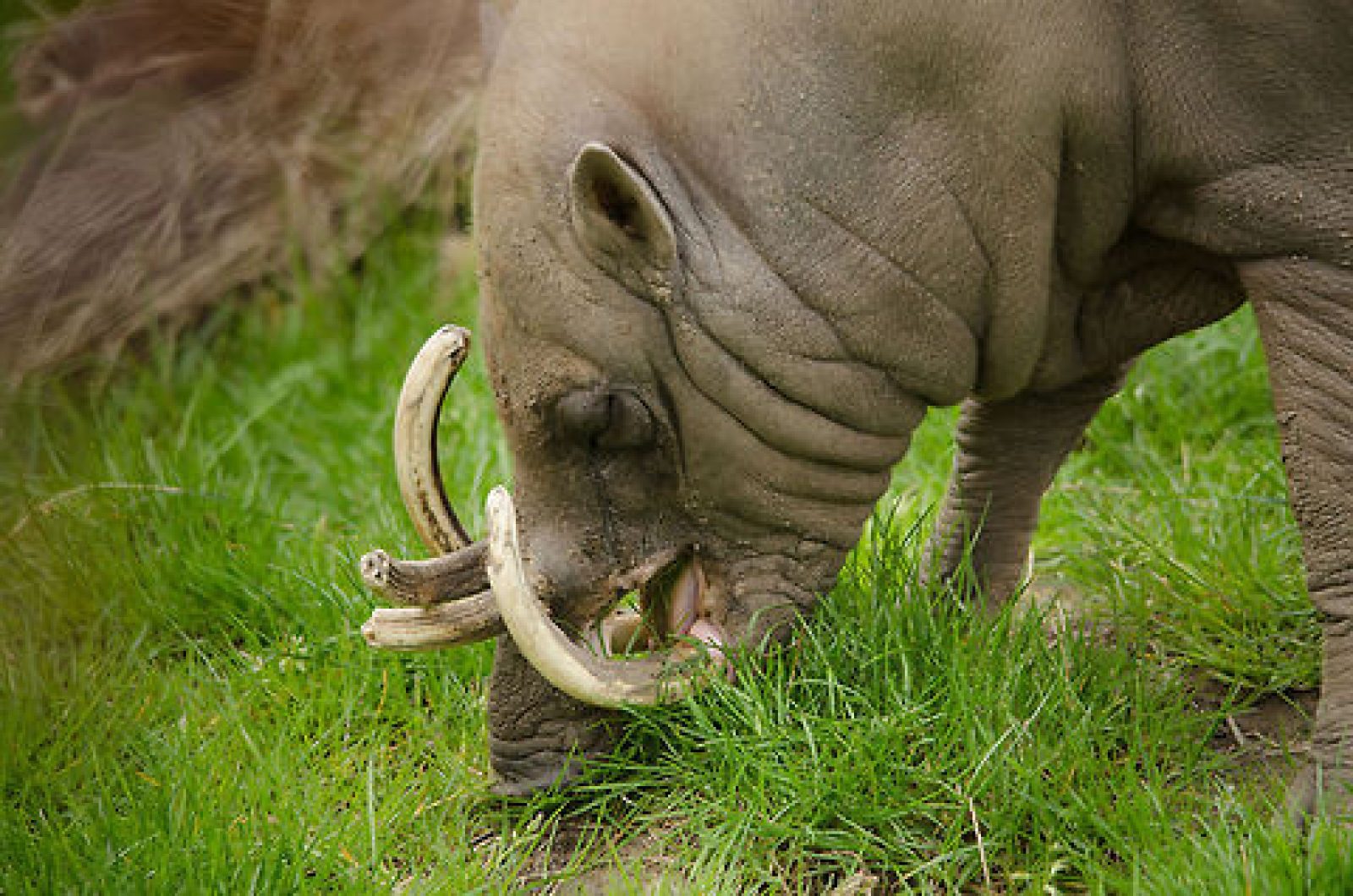
Bura Babirusa
 It is also known as the Moluccan babirusa, golden babirusa or hairy babirusa. Until recently, all of the Babirusa species were thought to be subspecies of this species. Only with recent genetic analysis, were they declared as separate species. In absence of detailed data on the Buru babirusa, it is generally assumed that its habitat and ecology are similar to that of North Sulawesi babirusa – and perhaps unsurprisingly, were considered the same species until 2001.
It is also known as the Moluccan babirusa, golden babirusa or hairy babirusa. Until recently, all of the Babirusa species were thought to be subspecies of this species. Only with recent genetic analysis, were they declared as separate species. In absence of detailed data on the Buru babirusa, it is generally assumed that its habitat and ecology are similar to that of North Sulawesi babirusa – and perhaps unsurprisingly, were considered the same species until 2001.
All of these species live in forests, which mean that they are relatively rarely seen, which makes it harder to research them, or indeed have an accurate idea of the populations of these species that still live in the wild.
The entire population is restricted to an area of 20,000 square km (7500 square miles) on the Indonesian islands of Buru, the two Sula Islands of Mangole and Taliabu.
Reaching sexual maturity at 5-10 months, they have ability to recover relativley quickly from reductions in their population (though seemingly not as fast as other species in its genus).










